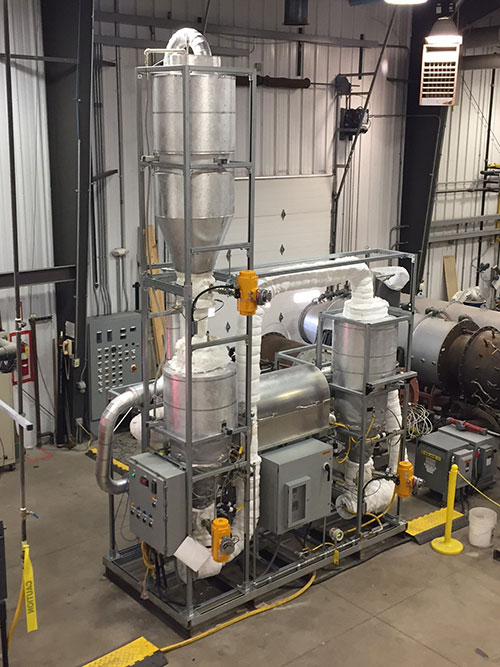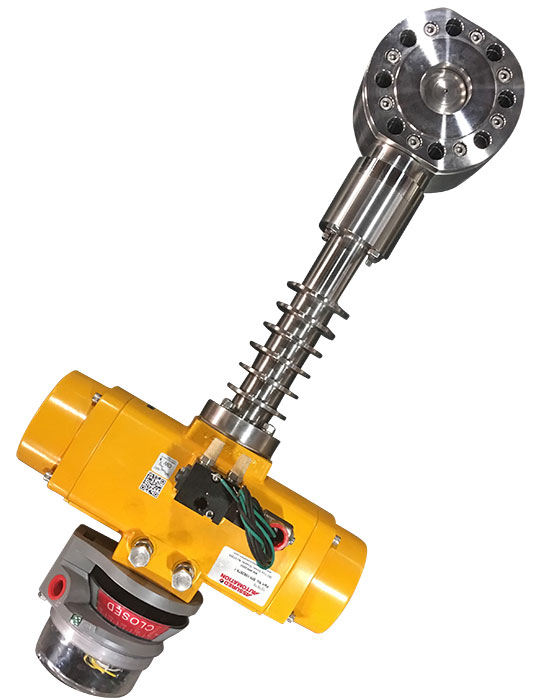Gemco Valve and ATEC Valve combined their expertise and technologies to produce a unique solution for processing extreme temperature abrasive powders for GTI – Gas Technology Institute is a cutting- edge energy business, located in Des Plaines Illinois. GTI solves important energy challenges, turning raw technology into practical solutions.
One of GTI’s current research projects is for the Department of Energy; specifically for ARPA-E (Advanced Research Projects Agency-Energy). ARPA-E is a US government agency modeled after the Defense Advanced Research Projects Agency and tasked with promoting and funding research and development of advanced energy technologies. The current GTI project involves cutting-edge methodologies for transferring and storing energy using particle thermal fluid and thermal reservoirs. GTI describes the research this way: “… particle thermal fluid technology has the potential to capture, transport, store and reuse energy at temperatures of 650°C …. The technology involves mixing 10s to 100s micron particles (e.g. carbon, sand, minerals, ceramic, refractory, metals, composite, glass) with suitable properties such as service temperature, melting point, thermal conductivity and specific heat capacity with a respective non-reactive gas (air, N2, CO2, etc.) to create a two-phase heat transfer medium.”*1
Few suitable valves are rated to operate at this temperature range and GTI needed to transfer their abrasive particles by dense phase conveying at 20 PSI. The typical hi-end range for high temperature rated valves is between 400-450ºC. It should be noted that temperatures higher than this are categorized as “extreme” temperatures*2.
Gemco Valve provided an ATEC segment valve designed for 2 Bar (30 PSI) at 650°C (1200°F) in 3”/80mm, 2”/50 mm and 1.5”/40mm sizes. Materials of construction like 309 stainless with alloy 625 and 276 and Graphite seals were used. The hardened metal seats were spring-loaded to allow for thermal expansion and provide gas-tight sealing over the wide range of operating temperatures required.
Gemco Valve and ATEC Valve’s extreme temperature powder valve in action.
One heat-related problem the team faced was that the automation/actuation package needed to be protected from the valves’ high operating temperatures. There are two typical methods for alleviating this problem, either of which is generally suitable. Conventional insulation around the piping and valve, or heat shielding, which employs a barrier between the valve and the actuator package. However, GTI wanted easy access to the automation package so the design team offered a unique solution. First, they extended the driveshaft length to increase the distance between the valve and the actuator and then added radiator fins to increase heat dissipation. This combination proved to be cost-effective, practical and efficient.
GTI had the palletized application tested successfully at the University of California at Merced site. Neither the client nor the test facility anticipates any operational or design problems, and as of this writing the valves have been working in-situ successfully for several months.
If you’re interested in more detailed information on high-temp valves, please enjoy this article on High Temperature Options.
*1 Simultaneously Generating Electricity and Storable Heat.
*2 Process Industry Informer


